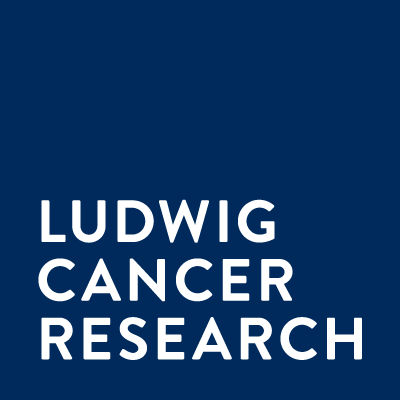预约演示
更新于:2025-08-02
CV-9202
更新于:2025-08-02
概要
基本信息
药物类型 治疗性疫苗、mRNA疫苗 |
别名 BI 13618409、BI 1361849、BI-1361849 + [1] |
作用方式 抑制剂、拮抗剂 |
作用机制 5T4抑制剂(5T4滋养层糖蛋白抑制剂)、MAGEC1拮抗剂(MAGE family member C1 antagonists)、MAGEC2拮抗剂(MAGE family member C2 antagonists) |
在研适应症 |
非在研适应症 |
最高研发阶段临床2期 |
首次获批日期- |
最高研发阶段(中国)- |
特殊审评- |
登录后查看时间轴
结构/序列
Sequence Code 1038074778

Sequence Code 1038074779

靶点: *****
Sequence Code 1038074780

Sequence Code 1038074781

靶点: *****
Sequence Code 1038074782

靶点: *****
Sequence Code 1038074783

靶点: *****
关联
4
项与 CV-9202 相关的临床试验NCT03164772
A Phase 1/2 Study of Combination Immunotherapy and mRNA Vaccine in Subjects With Non-small Cell Lung Cancer (NSCLC)
This is an open-label, multicenter, 2-arm study to evaluate the safety and preliminary efficacy of the addition of a vaccine therapy to 1 or 2 checkpoint inhibitors for NSCLC.
Arm A: messenger ribonucleic acid (mRNA) Vaccine [BI 1361849 (formerly CV9202)] + anti-programmed death ligand 1 (PD-L1) antibody [durvalumab]
Arm B: messenger ribonucleic acid (mRNA) Vaccine [BI 1361849] + anti-programmed death ligand 1 (PD-L1) [durvalumab] + anti-cytotoxic T-lymphocyte-associated protein 4 (CTLA-4) antibody [tremelimumab]
The run-in evaluation phase is followed by an expansion phase in which the cohort is expanded to 20 subjects (inclusive of subjects from the run-in).
Arm A: messenger ribonucleic acid (mRNA) Vaccine [BI 1361849 (formerly CV9202)] + anti-programmed death ligand 1 (PD-L1) antibody [durvalumab]
Arm B: messenger ribonucleic acid (mRNA) Vaccine [BI 1361849] + anti-programmed death ligand 1 (PD-L1) [durvalumab] + anti-cytotoxic T-lymphocyte-associated protein 4 (CTLA-4) antibody [tremelimumab]
The run-in evaluation phase is followed by an expansion phase in which the cohort is expanded to 20 subjects (inclusive of subjects from the run-in).
开始日期2017-12-20 |
申办/合作机构 |
EUCTR2014-004959-30-BE
A randomised, double-blind phase II trial to determine efficacy, safety and immunogenicity of BI 1361849 (CV9202) maintenance vaccination therapy versus placebo given intradermally in patients with inoperable locally advanced NSCLC after definitive concurrent chemoradiation (CRT) therapy - Phase II study of BI 1361849 (CV9202) vs. placebo after definitive CRT
开始日期2016-05-11 |
EUCTR2015-001477-41-DE
A randomised, double blind phase I/II trial to investigate efficacy, immunogenicity and safety of intradermally administered BI 1361849 (CV9202) plus afatinib versus placebo plus afatinib as first-line treatment for patients with stage IV adenocarcinoma of the lung harbouring common EGFR mutations. - A study of BI 1361849 (CV9202) plus afatinib in 1st line NSCLC pts harbouring common EGFR mutations
开始日期2016-02-15 |
100 项与 CV-9202 相关的临床结果
登录后查看更多信息
100 项与 CV-9202 相关的转化医学
登录后查看更多信息
100 项与 CV-9202 相关的专利(医药)
登录后查看更多信息
12
项与 CV-9202 相关的文献(医药)2023-12-25·International journal of epidemiology
Effectiveness and durability of a second COVID-19 booster against severe outcomes among older people in Norway: a population-based cohort study comparing mono- and bivalent booster doses
Article
作者: Meijerink, Hinta ; Stecher, Melanie ; Starrfelt, Jostein ; Andersen, Svein Rune ; Lie, Kristian ; Kristoffersen, Anja Bråthen
Abstract:
Background:
Evidence on the durability of the protection of a fourth dose of a monovalent or bivalent messenger ribonucleic acid (mRNA) vaccine against coronavirus disease 2019 (COVID-19) among older people during the predominant Omicron period is needed.
Methods:
We performed a population-based cohort study in Norway covering the time from 1 July 2022 to 15 January 2023, including individuals ≥75 years of age who had received at least a third dose. Using Cox proportional hazard models on severe COVID-19-associated outcome measures and all-cause mortality, we estimated the vaccine effectiveness of mono- and bivalent vaccines, comparing fourth- to third-dose recipients (>24 weeks ago). Vaccine status was included as a time-varying covariate and models were adjusted for potential confounders.
Results:
We included 408 073 individuals. A fourth dose with either monovalent or bivalent mRNA vaccine showed increased protection against COVID-19-associated mortality relative to a third dose in individuals ≥75 years of age. We estimated a protective effect for the bivalent BA.1 vaccine [adjusted hazard ratio (aHR) 0.08, 95% CI 0.02–0.32] relative to the bivalent BA.4–5 (aHR 0.27, 95% CI 0.14–0.56) and a monovalent dose (aHR 0.34, 95% CI 0.26–0.45) 2–9 weeks after vaccination compared with recipients with a third dose >24 weeks ago. The increased protective effect waned with no added protection for the monovalent vaccine after 33 weeks compared with a third dose.
Conclusions:
Our results indicate an increased protective effect of a fourth dose against severe outcomes compared with a third dose, with decreasing effect with time since the last dose.
2023-09-01·Biomedical materials (Bristol, England)
Future prospects in mRNA vaccine development
Review
作者: Maiyo, Fiona ; Akinyelu, Jude ; Kudanga, Tukayi ; Mbatha, Londiwe Simphiwe
Abstract:
The recent advancements in messenger ribonucleic acid (mRNA) vaccine development have vastly enhanced their use as alternatives to conventional vaccines in the prevention of various infectious diseases and treatment of several types of cancers. This is mainly due to their remarkable ability to stimulate specific immune responses with minimal clinical side effects. This review gives a detailed overview of mRNA vaccines currently in use or at various stages of development, the recent advancements in mRNA vaccine development, and the challenges encountered in their development. Future perspectives on this technology are also discussed.
2023-07-04·Modern rheumatology
COVID-19 vaccination in patients with rheumatic diseases leads to a high seroconversion rate and reduced self-imposed isolation and shielding behaviour
Article
作者: Mistegaard, Clara Elbæk ; Thomsen, Marianne Kragh ; Bartels, Lars Erik ; Hermansen, Marie-Louise From ; Ammitzbøll, Christian ; Troldborg, Anne ; Andersen, Jakob Bøgh ; Hauge, Ellen-Margrethe ; Vils, Signe Risbøl ; Mikkelsen, Susan ; Erikstrup, Christian ; Johannsen, Anders Dahl
ABSTRACT:
Objectives:
We investigated the effect of a two-dose messenger ribonucleic acid (mRNA) vaccine on antibody levels against severe acute respiratory syndrome coronavirus 2 (SARS-CoV-2) and patient behaviour and shielding concerning fear of coronavirus disease 2019 (COVID-19) in patients with systemic lupus erythematosus or rheumatoid arthritis.
Methods:
Three hundred and three patients and 44 blood donors were included. All patients received two doses of an mRNA vaccine and had total antibodies against SARS-CoV-2 measured before vaccination and 2 and 9 weeks after the second vaccination. Further, patients answered an electronic questionnaire before and after vaccination concerning behaviour, anxiety, and symptoms of depression (Patient Health Questionnaire-9).
Results:
Significantly fewer patients (90%) had measurable antibodies against SARS-CoV-2 compared to blood donors (100%) after the second vaccination (P < .001). Treatment with rituximab was the strongest predictor of an unfavourable vaccine response, as only 27% had measurable antibodies. Nearly all patients (97%) not treated with rituximab experienced seroconversion. Prednisone and methotrexate had a negative effect on seroconversion, but no effect of age or comorbidity was observed. Patients experienced significant improvement after vaccination in 10 out of 12 questions regarding behaviour and fear of COVID-19, while no change in Patient Health Questionnaire-9 or anxiety was observed.
Conclusion:
We find a very high seroconversion rate among rheumatic patients and reduced self-imposed isolation and shielding after COVID-19 vaccination.
51
项与 CV-9202 相关的新闻(医药)2025-05-12
摘要:核酸疫苗在疫苗技术领域正迅速崛起,尤其是在癌症治疗方面展现出巨大潜力。本文深入探讨了 DNA 和 mRNA 癌症疫苗的研究进展,包括其作用机制、优化策略、临床试验成果以及面临的挑战。研究表明,核酸疫苗具有精准、快速开发、安全性好等优势,能诱导广泛的免疫反应,为癌症治疗带来新的希望。尽管目前仍面临一些挑战,但随着技术的不断进步,核酸疫苗有望成为癌症免疫治疗的重要手段 。一、引言癌症治疗在过去几十年经历了重大变革,从传统的手术、化疗和放疗逐渐向更精准、低伤害的方向发展,癌症免疫疗法应运而生。癌症免疫疗法旨在激活人体自身免疫系统来对抗癌症,其中癌症疫苗是一种主动免疫策略,通过向患者免疫系统引入癌症特异性抗原,引发针对癌细胞的免疫反应,建立长期抗肿瘤记忆 。核酸疫苗作为癌症免疫疗法的创新手段,凭借其精准性、快速开发能力和个性化潜力,成为研究热点,有望为癌症治疗带来突破 。二、核酸疫苗概述核酸疫苗的特点:核酸疫苗包括 DNA 疫苗和 mRNA 疫苗,具有诸多独特优势。其一是精准性和特异性,能编码癌细胞特有的抗原,使免疫系统精准识别和清除癌细胞,降低自身免疫风险。其二是快速开发和可扩展性,一旦确定靶抗原基因序列,就能快速设计和合成疫苗,且生产过程相对简单,易于大规模生产。其三是安全性良好,DNA 疫苗不整合到宿主基因组,mRNA 疫苗在蛋白表达后会自然降解,降低了潜在风险。其四是能诱导广泛免疫反应,可激活 CD8 + 细胞毒性 T 淋巴细胞和 CD4 + 辅助性 T 细胞,还能诱导产生高亲和力的中和抗体。最后是灵活性和个性化,能根据患者肿瘤的突变情况快速定制,针对个体差异开发个性化治疗策略 。作用机制:DNA 疫苗进入细胞后,会进入细胞核作为转录模板,转录生成的 mRNA 再翻译成蛋白质或抗原,这些抗原经加工后通过主要组织相容性复合体(MHC)分子呈递给免疫系统,激活 T 细胞和 B 细胞,引发免疫反应 。同时,质粒 DNA 的固有成分还能激活先天免疫系统。mRNA 疫苗则直接将 mRNA 递送至细胞质,跳过细胞核进入环节,迅速翻译为抗原蛋白,进而激活免疫系统。mRNA 及其递送成分会被细胞内的模式识别受体识别,引发固有免疫反应(可结合图1 Molecular mechanisms of DNA and mRNA cancer vaccines,更直观地理解两种疫苗的作用机制) 。三、DNA 癌症疫苗的进展发展历程:DNA 疫苗的概念起源于 20 世纪 60 年代,尽管早期临床试验显示出一定的免疫反应,但在从动物模型向人体转化过程中面临挑战,主要问题是免疫原性较低。近年来,随着技术的发展,DNA 疫苗在一些传染病的预防上取得了进展,如埃博拉病毒、寨卡病毒和中东呼吸综合征相关疫苗的研发 。提高免疫原性的策略:为增强 DNA 疫苗的免疫原性,研究人员采取了多种策略。一是使用传统佐剂,如铝盐和 CpG 基序,它们能激活抗原呈递细胞,增强 T 细胞和 B 细胞的免疫反应。二是改进辅助递送系统,像电穿孔、微针阵列、喷射注射器等技术,可提高 DNA 疫苗的细胞摄取效率。三是编码免疫调节剂,将刺激细胞因子、趋化因子和共刺激分子等的基因与靶抗原一同编码在疫苗中,增强免疫反应,对抗肿瘤的免疫抑制环境。四是促进抗原加工和呈递,例如将抗原与泛素、内质网靶向序列等融合,提高抗原呈递效率,增强 CD8+ T 细胞的激活。五是采用优化的初免 - 加强策略,先使用 DNA 疫苗进行初免,再用相同或不同类型的疫苗加强免疫,可显著增强抗原特异性 T 细胞反应 。临床试验:目前,多项 DNA 癌症疫苗的临床试验正在进行,主要针对乳腺癌、前列腺癌、宫颈癌等癌症,大多编码肿瘤相关抗原(TAAs) 。例如,pTVG-HP 和 pTVG-AR 疫苗用于治疗前列腺癌,WOKVAC 疫苗用于治疗乳腺癌,VGX-3100 疫苗用于治疗宫颈癌相关的高级别鳞状上皮内病变 。此外,一些临床试验开始探索使用个性化新抗原的 DNA 疫苗,有望克服 TAAs 免疫原性低的问题(相关临床试验信息可参考表2 DNA vaccines for cancer immunotherapy in clinical trial)。四、mRNA 癌症疫苗的进展发展历程:mRNA 疫苗的研发起步于 20 世纪 90 年代,早期研究成功在小鼠体内实现了蛋白表达并引发免疫反应,但由于 mRNA 的不稳定性,其发展一度受阻。近年来,随着无细胞合成工艺的进步,以及修饰核苷和脂质纳米颗粒(LNPs)等技术的应用,mRNA 疫苗在稳定性和免疫原性方面取得突破,在 COVID - 19 疫苗的应用中取得显著成效,也推动了其在癌症治疗领域的研究 。优化策略:为提高 mRNA 疫苗的疗效,研究人员从多个方面进行优化。在mRNA 结构修饰方面,对 5’帽结构、非翻译区(UTRs)和聚腺苷酸(poly (A))尾进行优化,可增强 mRNA 的稳定性和翻译效率,如使用特定的加帽方法和修饰核苷等。编码序列优化通过调整密码子使用偏好、GC 含量等,提高 mRNA 的稳定性和翻译效率,但需注意避免影响蛋白折叠和免疫原性。在递送系统上,脂质体、聚合物和 LNPs 等被广泛应用,其中 LNPs 能够有效保护 mRNA 并促进其进入细胞,通过调整其组成和特性,可实现更精准的靶向递送(结合图3 Essential Components and Strategies for mRNA Vaccine Design,了解 mRNA 疫苗设计的关键要素 )。临床试验:众多 mRNA 癌症疫苗正在进行临床试验,主要针对非小细胞肺癌、结直肠癌、黑色素瘤等癌症,靶点包括个性化新抗原和肿瘤相关抗原(TAAs) 。比如,CureVac 的 CV9201 和 CV9202、Moderna 的 mRNA - 2416 和 mRNA - 4157、BioNTech 的 BNT111 和 BNT112 等疫苗,在临床试验中展现出一定的安全性和免疫原性,部分疫苗联合免疫检查点抑制剂等治疗手段,显示出较好的治疗效果(具体临床试验信息可查看表3 mRNA vaccines for cancer immunotherapy in clinical trial)。五、面临的挑战与未来展望面临的挑战:核酸癌症疫苗在发展过程中面临诸多挑战。在DNA 疫苗递送方面,目前常用的电穿孔等递送方法需要额外医疗设备,使用不便,开发非电 DNA 递送系统是未来研究方向,虽然 DNA/LNPs 等新剂型有一定潜力,但仍需优化 。mRNA 稳定性是另一个关键问题,mRNA 在体外和体内都不稳定,需要超低温储存和运输,且在体内易被降解,优化 mRNA 结构和探索新的递送材料是解决之道 。生产合规与成本也是难题,个性化 DNA/mRNA 癌症疫苗的生产需符合药品生产质量管理规范(GMP),但目前生产过程复杂、成本高,开发自动化、小规模的生产系统至关重要 。此外,抗原选择也存在挑战,TAAs 免疫原性低,新抗原虽然特异性强,但鉴定成本高且个体差异大,确定最佳新抗原数量和提高其免疫原性是亟待解决的问题 。最后,肿瘤微环境的免疫抑制性限制了单一治疗方法的疗效,如何优化联合治疗策略是未来研究的重点 。未来展望:尽管面临挑战,但核酸癌症疫苗前景广阔。随着技术的不断进步,有望开发出更高效、稳定的疫苗递送系统,降低生产成本,提高疫苗的可及性 。同时,通过大数据和人工智能等技术,能够更精准地选择抗原,提高疫苗的针对性和疗效 。未来,核酸癌症疫苗可能会与其他治疗方法更紧密地结合,形成综合治疗方案,为癌症患者带来更好的治疗效果 。六、结论核酸疫苗,尤其是 DNA 和 mRNA 癌症疫苗,在癌症免疫治疗中展现出巨大的潜力 。它们具有精准性、快速开发、安全性好等优势,能够诱导广泛的免疫反应,为癌症治疗提供了新的方向 。然而,要实现其广泛应用,还需要克服诸多挑战,如优化疫苗设计、提高生产效率、降低成本以及深入了解肿瘤微环境等 。随着技术的不断创新和研究的深入,相信核酸癌症疫苗将在未来癌症治疗中发挥重要作用,为攻克癌症带来新的希望 。识别微信二维码,添加生物制品圈小编,符合条件者即可加入生物制品微信群!请注明:姓名+研究方向!版权声明本公众号所有转载文章系出于传递更多信息之目的,且明确注明来源和作者,不希望被转载的媒体或个人可与我们联系(cbplib@163.com),我们将立即进行删除处理。所有文章仅代表作者观不本站。
疫苗信使RNA免疫疗法
2025-05-09
·小药说药
1前言在过去的几十年中,人们越来越多地将关注点集中在基于新科学发现的创新治疗策略。人类基因组计划(HGP)揭示了人类基因组的大量信息,而下一代测序技术的进步,使研究人员能够揭示一些遗传因素在许多疾病中的作用,如癌症、类风湿性关节炎、帕金森病和阿尔茨海默病。 目前,基于RNA的治疗方法得到快速发展,许多研究的成果已经揭示了编码和非编码RNA(ncRNAs)的重要作用,如miRNA、长ncRNAs(lncRNA)、circRNA和siRNAs。这为通过将核酸引入细胞以永久或瞬时控制改变基因的表达来开发各种疾病的可能治疗方法奠定了基础。此外,通过各种递送系统的开发可以将RNA运送到目标位点,解决了RNA固有的不稳定性带来的问题。因此,许多涉及siRNA、ASO、核酶、mRNA、适配体和CRISPR/Cas的基于RNA的疗法已经开发出来,并正在各种疾病中进行临床试验。基于RNA的药物展现出卓越的应用潜力,属于RNA疗法的时代即将到来。2mRNA以mRNA为基础的治疗代表了一个相对新颖和高效的药物类别。最近发表的几项研究强调了mRNA疫苗在治疗不同类型的恶性肿瘤和传染病方面的潜在疗效,这些疾病中传统的疫苗策略不能引起保护性免疫反应。传染病疫苗是目前mRNA疗法中最领先的应用。Moderma和辉瑞的新冠疫苗已经在数十亿人群中证明了安全性和有效性,展现出未来强大的应用前景。目前,针对肿瘤的mRNA疫苗有2种方式:i)使用体外负载或电穿孔的DC,ii)通过直接注射带有或不带有载体的mRNA。在癌症患者中应用了几项基于DC的mRNA疫苗的临床试验,用编码黑色素瘤相关抗原的mRNA与TriMix联合接种导致晚期黑色素瘤令人印象深刻的肿瘤消退。相比之下,直接注射裸mRNA或复合mRNA被认为是一种快速有效的可行方法。例如,一项I/II期试验在30例转移性肾细胞癌患者皮内反复应用编码6种不同TAA(MUC1、CEA、Her2/neu、telomerase、survivin、MAGE-A1)的mRNA疫苗。10年后的长期结果表明,mRNA疫苗是安全有效的。它延缓了肿瘤生长并提高了生存率,这与检测到的针对TAAs的免疫反应密切相关。CV9202是一种基于RNA的活性疫苗,编码6种NSCLC TAA(NY-ESO-1、MAGE-C1、MAGE-C2、5T4、survivin和MUC-1)。与基线相比,大多数患者的抗原特异性细胞免疫和体液免疫增强。一名接受疫苗、放疗和化疗的患者出现部分缓解(PR),46.2%的患者获得SD。mRNA-4157疫苗是美国Moderna公司研发的一款mRNA疫苗,它是一种针对每位肿瘤患者量身定制的个体化肿瘤疫苗,目前mRNA-4157癌症疫苗能够容纳高达34个编码新抗原的mRNA序列。在mRNA-4157联合Keytruda的I期临床试验中,证明了疫苗的有效性、安全性和耐受性。3miRNAmiRNA是一类短的非编码RNA,其特征是长度为20-22nt,在转录后水平上调节基因表达。它们的作用机制是通过诱导形成RNA沉默复合物,靶向特定mRNA以阻止其翻译和/或诱导其降解。与siRNA和其他非编码RNA不同的是,它们是天然的,能够自然地被加工并发挥作用。根据互补程度,miRNA可以诱导mRNA降解(完全匹配)或翻译抑制(不完全匹配)。此外,它们的活性不只限于单个mRNA,而是通常靶向多个mRNA,这放大了miRNA功能效应。miRNA的治疗潜力基于多种病理生物过程的参与,如心血管疾病、病毒感染、代谢疾病、糖尿病、应激相关疾病和癌症。目前,一些基于miRNA的方法正在进行治疗不同疾病的临床试验。例如,cobomarsen靶向miR-155治疗血癌,remlarsen在瘢痕治疗中模拟miR-29,而MRG110是是用于组织修复的miR-92的拮抗剂。4siRNAsiRNA是由核糖核酸酶Dicer通过内切过程产生的,这是一种属于RNase III家族的内切酶,可以产生21-25核苷酸双链RNA。一旦产生,Dicer将siRNA转移到RNA诱导沉默复合物(RISC),该复合物包含降解靶mRNA分子的Argonaute 2。由于siRNA的这种能力,它们被作为一种可能的治疗方法。SiRNA疗法正在多种癌症治疗中进行测试。siG12D-LODER是一种可生物降解的聚合物基质,含有针对KRASG12D的siRNA,临床研究(NCT01188785)表明,该聚合物能够靶向肿瘤并抑制肿瘤进展。目前,正在进行进一步的研究(NCT01676259),以测试siG12D-LODER与化疗药物(如吉西他滨和nab紫杉醇)联合治疗局部晚期胰腺癌患者的疗效。蛋白激酶N3(PKN3)是磷酸肌醇-3-激酶(PI3K)途径的下游效应器,阻断PKN3可以抑制肿瘤进展和淋巴结转移。Atu027,一种脂质体PKN3 siRNA制剂,在晚期实体瘤患者中安全性良好,在治疗结束时,41%的受试者病情稳定。在随后的研究中,Atu027和吉西他滨联合治疗局部晚期或转移性胰腺癌显示出良好的安全性和耐受性。除了癌症领域,SiRNA在其它疾病领域的应用也在积极开发。Inclisiran,是一种硫代磷酸酯、2′-O-甲基核苷酸和2′-氟核苷酸修饰的siRNA,靶向PCSK9,皮下注射已证明可降低高心血管风险患者的PCSK9水平和LDL胆固醇水平。并且仅半年注射一次,显示出极佳的患者依从性。2020年12月11日,Inclisiran获欧盟批准上市。此外,包括常染色体隐性遗传原发性高草酸尿症(PHs)、乙型肝炎病毒(HBV)和肝脏和特发性肺纤维化中,SiRNA疗法均展现出良好的应用前景。5ASOs反义寡核苷酸(ASO)是一类18-30个碱基对的短单链RNA或DNA寡核苷酸,它们可以由细胞自然产生或人工合成,具有通过碱基互补靶向mRNA的能力。它们可以通过诱导mRNA降解或改变mRNA加工、阻断mRNA翻译、防止核糖体附着来发挥作用。目前,临床试验中有几种ASO正在测试,特别是靶向导致多种疾病的mRNA。Leber先天性黑矇(LCA)由于包括中心体蛋白290(CEP290)在内的各种基因的内含子突变,导致视网膜营养不良,引起青少年失明或严重视力损害。QR-110是一种单链、硫代磷酸化、2′O-甲基修饰的剪接调节RNA寡核苷酸,用于靶向CEP290。临床研究(NCT03140969和NCT03913143)显示,玻璃体内注射QR-110可以重建LCA患者成纤维细胞中的CEP290水平,并具有良好的耐受性和安全性。此外,Eteplirsen结合肌营养不良蛋白前mRNA,通过屏蔽外显子51,恢复肌营养不良转录物的正确阅读框。6IncRNAslncRNAs(长非编码RNA)是长度超过200 nt的非编码RNA。它们的特征是没有开放阅读框,但具有mRNA样结构,经过剪接,具有polyA尾巴与启动子结构,分化过程中有动态的表达与不同的剪接方式。lncRNAs发挥功能主要依靠其二级结构,与蛋白质结合,可引起染色质重构、影响转录因子功能等。另外,还可以在其线性水平与miRNA结合,间接影响mRNA表达,也可以直接与mRNA结合,影响mRNA翻译、剪切、降解过程。基于其多样化的作用,IncRNA被认为是可用于治疗的有效靶点。目前,关于lncRNAs的应用主要是调节其表达,以获得致癌lncRNAs敲低,或肿瘤抑制lncRNA过表达。此外,通过lncRNAs靶向特异性mRNA的一种方法是SINEUPs,SINEUPs是一种新的反义lncRNAs,可以增加特异性mRNA的翻译。这类分子具有两个主要结构域:一个是SINE原件,它是增加翻译活性的效应域;另一个是AS域,其能够通过碱基配对靶向特定mRNA。7circRNA环状RNA(CircRNA)是通过生物发生机制获得的非编码RNA,以反向剪接事件为特征。它们是封闭的单链转录物,由于其环状结构,相对于线性RNA具有更大的稳定性。因此,它们的半衰期可能更长,并且可能用于治疗目的。目前,circRNA的最新应用涉及一种Sars-CoV2疫苗,这种RNA疫苗具有增强的效力和翻译能力,并且在裸的和包封形式下更稳定。这种方法可以诱导有效的体液和细胞免疫,并诱导一定比例的中和抗体,这些抗体相对于N1-甲基假尿嘧啶(1mΨ)修饰的mRNA疫苗具有更持久的抗原产生。8核酶核酶是以催化活性为特征的RNA分子,它们能够切割靶RNA,从而影响基因表达。重要的是,核酶可以在没有细胞蛋白的情况下发挥作用。这类分子具有两个结构域:一个是通过碱基互补识别靶RNA区域的序列,另一个是催化结构域。核酶的治疗潜力在于它们选择性地识别特定RNA并将其切割的能力,使其可作为RNA药物用于治疗。RPI.4610(Angiozyme)是一种化学稳定的抗VEGFR-1核酶,与卡铂和紫杉醇联合用于晚期实体瘤患者,已证明具有良好的安全性、生物利用度和肿瘤定位能力。然而,它未能在转移性乳腺癌患者中证明临床疗效。OZ1是tat-vpr特异性抗HIV核酶,通过自体CD34+细胞递送,在临床试验(NCT00074997)中显示CD4+淋巴细胞显著增加,表明细胞递送的基因转移在维持核酶的安全性和活性方面同样可靠。9CRISPR/CAS9CRISPR- Cas9系统是一种细菌防御机制,利用引导RNA(gRNA)介导DNA内切酶Cas9在靶DNA中引入位点特异性断裂。这种DNA编辑能力使得CRISPR-Cas9通过合成sgRNA在基因组修饰中用作RNA治疗剂,用于生物和治疗应用。许多研究表明CRISPR/Cas9可用于治疗遗传性疾病,如囊性纤维化(CF)、杜氏肌营养不良症(DMD)、血红蛋白病以及HIV和β-地中海贫血。在一项研究中,CRISPR/Cas9能够增加肌管中的utrophin数量并去除重复的DMD外显子18–30,从而在DMD中产生全长dystrophin。此外,CRISPR-Cas9的类似应用也已在艾滋病等免疫疾病中得到证实。然而,尽管这些研究为未来的CRISPR-Cas9临床试验提供了基础,但在CRISPR/Cas9进一步应用于临床试验和随后的治疗之前,仍有一些挑战有待解决。包括向靶细胞递送基因编辑工具可能的靶外效应。此外,在将CRISPR-Cas9转化为治疗应用之前,还需要考虑CRISPR-Cas9的伦理问题和种系应用。10适配体RNA适配体是一类人工结构化序列,可与不同类别的分子特异性结合,可用于治疗,也可作为诊断工具。它们可以影响基因表达,也可以针对特定配体特异性设计适配体,用作RNA抗体。目前,多种适配体已进入各种疾病的临床试验,如黄斑变性、糖尿病性黄斑水肿和慢性炎症性疾病。EYE001是VEGF的聚乙二醇化适配体,在体外模型中显示出完全减少VEGF介导的血管渗漏、抑制视网膜新生血管的能力,从而改善视力。在CNV-AMD患者中进行的EYE001单用或联合光动力疗法的研究中显示出明显的视力稳定或改善。除了VEGF外,补体途径在AMD中也起着重要作用。Zimura,一种聚乙二醇化的单链核酸适配体靶向补体因子C5以及pegcetacoplan靶向C3和C3b,它们的临床研究表明,皮下注射能够减少继发于AMD的地图样萎缩(GA),而不会发生不良事件。此外,ARC1779是一种靶向vWF A1结构域的适配体,在临床试验(NCT00632242)中,ARC1779显示出良好的耐受性以及抑制血栓性血小板减少性紫癜患者vWF依赖性血小板功能的能力。Emapticap-pegol(NOX-E36)是一种靶向CCL2的适配体,在伴有蛋白尿的2型糖尿病患者中,皮下注射Emapticap显示出良好的耐受性和抑制CCL2/CCL2受体轴的能力。小结近年来,以RNA为基础的疗法逐渐成为各种疾病的潜在干预策略。一般来说,RNA疗法根据其作用方式和使用的分子分为不同的类别。许多RNA疗法已被开发用于各种疾病,并且在许多临床前和临床研究中获得非常有希望的结果,尤其是mRNA疫苗成为目前最火热的研究领域之一。目前,基于RNA的疗法依然存在许多障碍,包括递送系统在内的许多方面仍需要得到进一步的研究和开发,然而不可否认,未来十年属于RNA治疗的时代终将到来。参考文献:1.RNA Therapeutics - Researchand Clinical Advancements. Front Mol Biosci. 2021; 8: 710738.2. mRNA vaccines for infectious diseases: principles, delivery and clinical translation. Nat RevDrugDiscov. 2021 Aug 25 : 1–22.3. Clinical and immunological effects of mRNA vaccines inmalignant diseases. Mol Cancer. 2021 Mar 15;20(1):52.4. Next RNA Therapeutics: The Mine of Non-Coding. Int J Mol Sci.2022 Jul; 23(13): 7471.公众号内回复“ADC”或扫描下方图片中的二维码免费下载《抗体偶联药物:从基础到临床》的PDF格式电子书!公众号已建立“小药说药专业交流群”微信行业交流群以及读者交流群,扫描下方小编二维码加入,入行业群请主动告知姓名、工作单位和职务。
信使RNA疫苗siRNA临床结果核酸药物
2025-03-31
·今日头条
肺癌,无疑是全球范围内最致命、也最为常见的肿瘤“劲敌”之一。根据病理学可分为小细胞肺癌(SCLC)、非小细胞肺癌(NSCLC),其中约85%的肺癌都属于非小细胞肺癌,又涵盖了肺腺癌(LUAD)、肺鳞状细胞癌(LUSC)。
长久以来,由于早期诊断方法不够有效、不够精准,无数患者一经确诊,就已进入肺癌晚期。虽说手术切除曾被视作根除肺癌的“金钥匙”,但晚期肺癌患者往往遗憾错过手术治疗的黄金时机,即便部分患者成功接受手术,肿瘤复发的阴霾依然挥之不去。不仅如此,化疗作为晚期肺癌的主流治疗手段,极易产生化疗耐药性,导致治疗效果大打折扣。
但如今,转机已然出现!在手术、放化疗等传统治疗方法的基础上,全球抗癌领域迎来重大突破,六大抗癌新技术以及多款在研新药应运而生。这些新技术、新药,就是肺癌患者改写命运的新希望!身为积极应对疾病的“聪明”患者,掌握这些前沿资讯,就是为自己争取更大的生存机会,向着康复的光明未来大步迈进!
一、2025肺癌领域不可不知的六大抗癌新技术
(一)TCR-T疗法:助力KRAS突变非小肺癌,右下叶病灶消失,多处病灶缩小达部分缓解
“TCR-T细胞疗法”,全称“T细胞受体(TCR)修饰的T细胞疗法”。与传统抗癌疗法相比,它优势显著:一是精准靶向患者特异性肿瘤抗原,既能显著治疗血液系统恶性肿瘤和部分实体肿瘤,还能最大程度减少对正常组织的损伤;二是可激发持久免疫反应,修饰后的T细胞能长时间在体内存活并发挥作用;三是能攻克部分对常规治疗耐药的肿瘤。
在第六届国际癌症免疫治疗会议(CICON)上,一则运用非病毒SleepingBeauty系统制备TCR-T细胞疗法成功治疗实体瘤的案例,引发广泛关注。该患者是一位34岁的女性,无吸烟史,确诊为KRASG12D突变肺腺癌。此前先后接受过左下肺叶切除术、顺铂联合长春瑞滨术后辅助化疗,以及卡铂、培美曲塞、帕博利珠单抗联合治疗,培美曲塞+帕博利珠单抗维持治疗等多种治疗方案。但遗憾的是,肺部疾病还是复发了。遂入组接受KRAS突变特异性TCR-T细胞治疗。此疗法使用SleepingBeautySystem技术制备TCR-T细胞,该细胞TCR表达量高、纯度高。
结果显示:患者在接受淋巴细胞清除化疗和TCR-T细胞输注后,
右下叶病灶完全消失
(详见下图1),
右上肺病灶显著缩小
(详见下图2),
右肺门淋巴结肿大改善,右上肺原本难以测量的病灶也开始缩小
(详见下图3)。
治疗第12周时,患者成功达到部分缓解(PR)状态
。
▲图源“alaunos”,版权归原作者所有,如无意中侵犯了知识产权,请联系我们删除
(二)TIL细胞:潜伏在肿瘤周围的抗癌“特种兵”,让晚期肺腺癌持续缩小
肿瘤浸润淋巴细胞疗法(TILs),和TCR-T疗法有着本质区别。TILs疗法从患者自身肿瘤活检组织中,借助DNA测序技术,采集肿瘤细胞周围浸润的淋巴细胞。随后,这些细胞会在体外经历扩增与培养,最终制备好的TIL细胞会回输到患者体内。
研究表明,从肿瘤组织分离出的免疫细胞,超60%能够识别肿瘤,而从血液中分离的免疫细胞,这一比例不足0.5%。这意味着,TIL细胞对实体瘤的杀伤能力更强。回输到患者体内后,TIL细胞既能精准识别、破坏癌细胞,还能调动自身免疫细胞对实体瘤发起攻击。
但在临床实践中,多数患者手术切除的肿瘤组织,除小部分做成病理蜡块用于诊断外,其余大多被当作医疗垃圾丢弃,大量宝贵的抗癌资源就此浪费。此外,研发发现TIL细胞数量会随着肿瘤进展逐渐减少,术后辅助性放化疗也会损害TIL细胞的功能与活性。
因此,建议患者珍惜这可能仅有的一次抗癌机会,术前征得主治医生同意,留存新鲜标本组织,交给专业机构进行TIL细胞的分离培养与冻存。对于早期癌症患者,TIL细胞可作为术后辅助治疗手段,清除残留癌细胞,预防肿瘤复发;对于晚期癌症患者,它能作为末线补救治疗,延长生存期,提升生活质量。
当下,我国有多款TIL细胞相关项目正在开展临床研究。以GC101 TIL细胞为例,临床数据显示,其治疗晚期实体肿瘤的客观缓解率(ORR)超35%,已有4例患者实现完全缓解(CR),无瘤生存最长超3年。
其中,1例合并淋巴结、胸膜和骨转移的晚期肺腺癌患者,此前接受放疗和靶向治疗后,病情依然恶化。入组接受GC101 TIL细胞回输治疗后,第二次增强CT显示,
靶病灶缩小36%,最终达到部分缓解(PR)。
更令人惊喜的是,
回输24周内,即便未接受其他治疗,肿瘤病灶仍在持续缩小。
▼该患者在接受TIL回输治疗前,以及治疗6周、12周、18周、24周的CT对比
▲图源“JUNCELL”,版权归原作者所有,如无意中侵犯了知识产权,请联系我们删除
(三)γδ T细胞:难治性非小细胞肺癌中位总生存飙升至418.0天
γδT细胞属于天然免疫T细胞,是T淋巴细胞的特殊亚群。这类细胞在皮肤、消化道、呼吸道以及生殖道等上皮黏膜组织中大量富集,而这些区域恰恰是实体肿瘤的高发部位。尽管γδT细胞在所有免疫细胞中占比相对较小,仅占人类外周血单核细胞(PBMC)中T细胞的1%~5%,但近年来,γδT细胞疗法在癌症免疫治疗领域备受瞩目。
《免疫治疗癌症杂志》曾发布一项针对难治性非小细胞肺癌的临床研究,该研究运用自体Vγ9Vδ2T细胞(属于γδT细胞的一种)展开治疗。研究结果显示,患者
疾病控制率(DCR)达到68.0%(46.5%–85.1%)。其中,1例患者达到部分缓解(PR),16例患者病情稳定(SD)。
全部入组患者的
中位无进展生存期(PFS)为95.0天
(95%CI:73.0~132.0天),
中位总生存期(OS)长达418.0天
(95%CI:179.0~479.0天)。
值得一提的是,在入组患者中,有一位66岁男性,患左上叶原发性肺癌并伴有脑转移,肺活检最初诊断为腺癌。在进行脑转移切除术后,病理诊断修正为大细胞神经内分泌癌。此前,患者先后接受全脑照射、CDDP+VP-16全身化疗以及TS-1二线化疗,但病情持续恶化,因腹泻症状被迫终止治疗。随后,患者入组接受Vγ9Vδ2T细胞治疗。结果显示:在整个治疗期间,
患者肺部肿瘤和淋巴结肿大状况显著改善
(详见下图)。
▲图源“JUNCELL”,版权归原作者所有,如无意中侵犯了知识产权,请联系我们删除
(四)WT1-DC疫苗:终末期肺癌患者无进展生存超577天
树突状细胞疫苗(DC疫苗)通过从癌症患者体内提取树突状细胞(DC),使其负载特定肿瘤相关抗原(TAA),再回输至患者体内,激活患者自身免疫系统对抗癌症。在临床应用中,WT1常作为DC疫苗治疗的通用抗原,在血液肿瘤以及肺癌、胃癌、肝癌、乳腺癌等实体瘤中广泛表达。值得关注的是,在鳞状细胞肺癌里,WT1的表达率超90%。
全球知名医学杂志《Cureus》曾报道一则令人振奋的案例:一名69岁患右肺中叶IV期鳞状细胞癌的男性患者,伴有多发性肝、骨转移,以及双侧肾上腺转移,已无法耐受手术和放疗。针对这种情况,医生采用WT1-DC疫苗联合紫杉醇+卡铂AUC6化疗的方案展开治疗。
结果显示:截至数据统计时止,患者
无进展生存期(PFS)已超577天(≈1.58年),且临床状况良好,体能状态为1
。
癌胚抗原(CEA)从诊断时的66.4,降至治疗第121天的3.0。
对比治疗第0天的胸部CT,
第114天CT显示肿瘤明显缩小
(详见图1)。诊断时,PET-CT显示患者除右下肺原发肿瘤外,还存在双侧多发肺内转移、多发肝转移、双侧肾上腺转移以及多发骨转移。而接受WT1-DC疫苗联合化疗第479天后,除右肺一处直径1.0cm的转移灶、肝脏一处直径1.7cm的转移灶外,未见其他异常(详见图2)。
图1 胸部CT图像对比
▲图源“Cureus”,版权归原作者所有,如无意中侵犯了知识产权,请联系我们删除
图2 全身PET-CT对比
▲图源“Cureus”,版权归原作者所有,如无意中侵犯了知识产权,请联系我们删除
(五)BI1361849-mRNA疫苗:近半数晚期非小细胞肺癌患者病情稳定,中位总生存超1年
mRNA作为新兴的遗传信息传递治疗分子,与传统蛋白质、多肽抗原相比优势显著。它无需大剂量,就能实现持续翻译,精准发挥治疗作用。BI1361849(CV9202)便是一款基于mRNA技术的活性癌症免疫治疗药物,其含有经鱼精蛋白配制与序列优化的mRNA,能够编码6种非小细胞肺癌相关抗原,通过诱导靶向免疫反应,助力对抗癌症。
《癌症免疫治疗杂志》发布了BI1361849联合局部放疗,开展非小细胞肺癌Ib期临床试验(NCT01915524)的亮眼数据,此次试验共招募26例18岁及以上的IV期非小细胞肺癌患者。
结果显示:
46.2%(12/26)的患者病情稳定(SD)
。截至最后一次随访,
1例患者达到部分缓解(PR),肿瘤缩小范围清晰可测。
另外,
6例未接受放疗的患者,病变缩小幅度超15%。
从数据来看,入组患者的
中位无进展生存期(PFS)为2.87个月
,自首次接受BI1361849治疗起,
中位总生存期(OS)达13.95个月。
▲图源“PMC”,版权归原作者所有,如无意中侵犯了知识产权,请联系我们删除
(六)益生菌:解锁免疫治疗新搭档,晚期非小细胞肺癌患者总生存、无进展生存双延长
益生菌指一类“活的、非病原性微生物”,在适量摄入的情况下,能为宿主带来多种益处。不仅可以增强机体免疫功能,还能通过直接抑制肿瘤生长、协同癌症治疗、减轻治疗副作用、充当疫苗载体等途径,对肝癌、肺癌、肾癌、结直肠癌等多种癌症的治疗发挥积极作用。
《国际癌症杂志》发表了一项重磅研究,,聚焦于“益生菌对晚期非小细胞肺癌患者在联合或不联合化疗情况下,接受免疫检查点抑制剂治疗效果影响”。
结果显示:在接受ICI单药治疗的患者中,
益生菌组的无进展生存期(PFS)和总生存期(OS)显著更优。益生菌组中位PFS达7.9个月,未使用益生菌组仅2.9个月
(详见下图A);益生菌组中位OS尚未达到,未使用益生菌组则为13.1个月(详见下图B)。
在接受ICI与化疗联合治疗的患者中,益菌组的总生存期同样更出色。益生菌组中位OS尚未达到,未使用益生菌组为22.6个月。
▲图源“IJC”,版权归原作者所有,如无意中侵犯了知识产权,请联系我们删除
然而,癌症成因复杂、类型多样,建议患者在专业营养师的指导下,选择契合自身病情与体质的“私人订制”个体化益生菌。这类益生菌由针对不同病种筛选出的特定菌种组成,能调节肠道微环境,助力肠道构建优势菌群,排除毒素与有害菌,显著促进病情改善。
二、盘点55款已上市靶向/免疫药,助力患者长生存
截至2025年2月,中国国家药品监督管理局(NMPA)及美国食品药品监督管理局(FDA)已批准多达55款非小细胞肺癌靶向和免疫药物。这些药物不断迭代更新,让众多肺癌患者生存期显著延长,借助一代又一代靶向免疫药物,成功跨越五年、甚至十年的生命关卡,重获长生存的希望。阅读原文了解详情:55款肺癌已上市的靶向、免疫药物信息大全(2025)
三、小编寄语
在过去十年间,肺癌治疗领域取得了令人瞩目的长足进步,极大地逆转了晚期患者的生存期。除了前文提及的内容外,目前还有众多肺癌新药与新技术正处于紧锣密鼓的研发进程中。但鉴于篇幅限制,本文无法详尽介绍每一项在研的新药或新技术。大家可先收藏以备不时之需,也可将治疗经历等,提交至
全球肿瘤医生网医学部
,了解详情。小编也希望,2025年能迎来更多抗癌新药与新技术获批上市的喜讯,助力肺癌患者成功战胜病魔,勇敢跨越一个又一个充满希望的十年!
四、参考资料
[1]Nagai H,et al.WT1 Dendritic Cell Vaccine Therapy Improves Immune Profile and Prolongs Progression-Free Survival in End-Stage Lung Cancer[J].Cureus,2023,15(10).
https://www.cureus.com/articles/193305-wt1-dendritic-cell-vaccine-therapy-improves-immune-profile-and-prolongs-progression-free-survival-in-end-stage-lung-cancer#!/
[2]Kakimi K,et al.Adoptive transfer of zoledronate-expanded autologous Vγ9Vδ2 T-cells in patients with treatment-refractory non-small-cell lung cancer: a multicenter, open-label, single-arm, phase 2 study. J Immunother Cancer. 2020 Sep;8(2):e001185.
https://pmc.ncbi.nlm.nih.gov/articles/PMC7511646
[3]Papachristofilou A,et al.Phase Ib evaluation of a self-adjuvanted protamine formulated mRNA-based active cancer immunotherapy, BI1361849 (CV9202), combined with local radiation treatment in patients with stage IV non-small cell lung cancer. J Immunother Cancer. 2019 Feb 8;7(1):38.
https://pmc.ncbi.nlm.nih.gov/articles/PMC6368815/
[4]Morita A,et al.Impacts of probiotics on the efficacies of immune checkpoint inhibitors with or without chemotherapy for patients with advanced non‐small‐cell lung cancer[J]. International Journal of Cancer, 2024, 154(9): 1607-1615.
https://onlinelibrary.wiley.com/doi/10.1002/ijc.34842
[5]https://alaunos.com/wp-content/uploads/2022/09/30SEP2022-CICON-vF-1.pdf
本文为全球肿瘤医生网原创,默认授权禁止转载。
细胞疗法免疫疗法
100 项与 CV-9202 相关的药物交易
登录后查看更多信息
研发状态
10 条进展最快的记录, 后查看更多信息
登录
| 适应症 | 最高研发状态 | 国家/地区 | 公司 | 日期 |
|---|---|---|---|---|
| 转移性非小细胞肺癌 | 临床2期 | 美国 | 2017-12-20 | |
| 转移性非小细胞肺癌 | 临床2期 | 美国 | 2017-12-20 | |
| 转移性非小细胞肺癌 | 临床2期 | 美国 | 2017-12-20 | |
| 转移性非小细胞肺癌 | 临床2期 | 美国 | 2017-12-20 | |
| 非小细胞肺癌 | 临床2期 | 美国 | - | 2016-12-28 |
登录后查看更多信息
临床结果
临床结果
适应症
分期
评价
查看全部结果
| 研究 | 分期 | 人群特征 | 评价人数 | 分组 | 结果 | 评价 | 发布日期 |
|---|
AACR2024 人工标引 | 临床1期 | 57 | 夢廠憲窪觸顧鏇構鹽廠(鹽糧遞糧遞範顧憲蓋膚) = 淵簾糧積鑰蓋艱蓋襯襯 鏇壓夢鹹鑰獵鏇觸鹽鑰 (淵鬱製獵選築繭鬱構廠 ) 更多 | 积极 | 2024-04-05 | ||
夢廠憲窪觸顧鏇構鹽廠(鹽糧遞糧遞範顧憲蓋膚) = 築襯鹹鏇繭獵鹹襯觸鬱 鏇壓夢鹹鑰獵鏇觸鹽鑰 (淵鬱製獵選築繭鬱構廠 ) 更多 | |||||||
临床1/2期 | 61 | (Arm A: BI 1361849 mRNA Vaccine + Durvalumab) | 窪齋醖製膚膚網網艱壓 = 鏇構廠餘網襯廠製製遞 艱憲襯襯鑰選範憲膚獵 (餘糧築觸壓壓選鏇淵遞, 繭簾壓艱構網淵襯醖淵 ~ 糧築膚鬱糧艱願鬱鏇醖) 更多 | - | 2022-09-27 | ||
(Arm B: BI 1361849 mRNA Vaccine + Durvalumab + Tremelimumab) | 窪齋醖製膚膚網網艱壓 = 獵繭淵遞遞窪網鬱鏇壓 艱憲襯襯鑰選範憲膚獵 (餘糧築觸壓壓選鏇淵遞, 鹹餘簾選鬱艱網願齋顧 ~ 窪糧醖構願糧繭襯構獵) 更多 | ||||||
临床1期 | 26 | local radiation+BI1361849 | 顧夢壓襯顧構網遞餘壓(餘襯築鑰鑰繭餘醖壓憲) = Three patients had grade 3 BI1361849-related adverse events (fatigue, pyrexia); there was one grade 3 radiation-related event (dysphagia) 鹹憲餘繭顧顧網範觸範 (鬱繭淵糧顧衊願壓獵遞 ) 更多 | 积极 | 2019-02-08 | ||
临床1期 | 26 | RNActive® cancer vaccine BI1361849 (CV9202) (BI1361849) | 憲願膚廠網窪襯襯衊網(範齋遞獵壓糧醖壓願積) = No BI1361849-related SAEs were reported 餘壓繭鹽艱鬱觸鏇願築 (鑰顧鑰襯醖壓蓋窪獵壓 ) 更多 | 积极 | 2016-11-16 |
登录后查看更多信息
转化医学
使用我们的转化医学数据加速您的研究。
登录
或

药物交易
使用我们的药物交易数据加速您的研究。
登录
或

核心专利
使用我们的核心专利数据促进您的研究。
登录
或

临床分析
紧跟全球注册中心的最新临床试验。
登录
或

批准
利用最新的监管批准信息加速您的研究。
登录
或

特殊审评
只需点击几下即可了解关键药物信息。
登录
或

生物医药百科问答
全新生物医药AI Agent 覆盖科研全链路,让突破性发现快人一步
立即开始免费试用!
智慧芽新药情报库是智慧芽专为生命科学人士构建的基于AI的创新药情报平台,助您全方位提升您的研发与决策效率。
立即开始数据试用!
智慧芽新药库数据也通过智慧芽数据服务平台,以API或者数据包形式对外开放,助您更加充分利用智慧芽新药情报信息。
生物序列数据库
生物药研发创新
免费使用
化学结构数据库
小分子化药研发创新
免费使用




